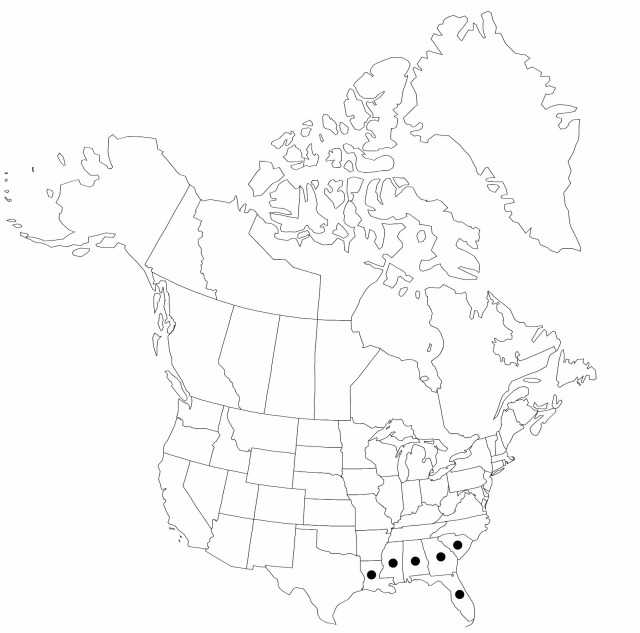Difference between revisions of "Rhynchospora compressa"
Fl. South. U.S., 525. 1860.
FNA>Volume Importer |
FNA>Volume Importer |
(No difference)
| |
Revision as of 21:07, 16 December 2019
Plants perennial, cespitose, 70–100(–150) cm; rhizomes absent. Culms erect to ascending, leafiest at base, triangular, slender, somewhat stiff. Leaves exceeded by culm; basal blades crowded, spreadingexcurved, distal ascending, linear, proximally flat, 3–5 mm wide, apex trigonous, shortsubulate. Inflorescences: spikelet clusters 3–5, compact, the proximalmost widely spaced, turbinate or lobed to hemispheric; leafy bracts setaceous, mostly overtopping clusters. Spikelets redbrown, broadly ovoid, 3–3.5(–4) mm, apex acuminate; fertile scales broadly ovate to ± orbiculate, 2–2.5(–3) mm, apex rounded to notched, midrib included or shortexcurrent. Flowers: perianth bristles 6, reaching from fruit midbody to tubercle, antrorsely barbellate. Fruits 1–2 per spikelet, (2–)2.5–2.8(–3) mm; body brownish, broadly obovoid to nearly orbicular, 1.5–2 × 1.5–2 mm; surfaces strongly transversely wavyrugose, intervals rows of vertical, rectangular alveolae; tubercle conic-subulate, basal rim flaring above short neck on achene.
Phenology: Fruiting spring–fall.
Habitat: Moist sands and peats of pine flatwoods, bog margins, savannas
Elevation: 0–100 m
Distribution

Ala., Fla., Ga., La., Miss., S.C.
Discussion
Rhynchospora compressa is very closely akin to R. recognita and even coarser; inflorescence clusters are about as bristly and fertile scales blunter than those in R. recognita. It is less inclined to have an excurrent midrib, and the fruit is flatter. Both species often produce sterile spikelets, sometimes comprising an entire inflorescence.
Selected References
None.
